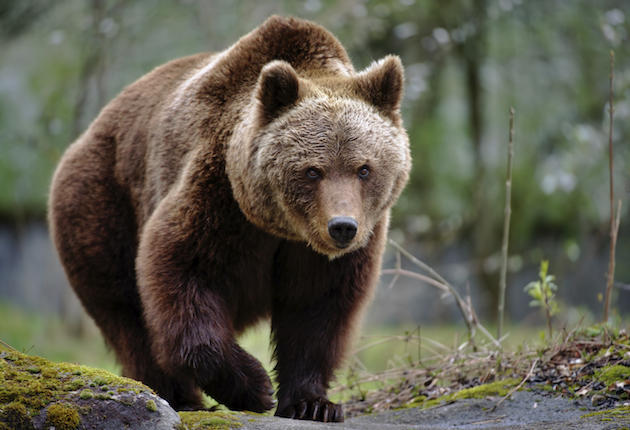They sound like the names children would give bears as they learn to speak, but “grolar bears” and “pizzlies” are real animals formed by the interbreeding of polar bears and grizzlies. Each hybrid draws its name from its paternal ancestory; the former is the result of a male grizzly bear mating with a female polar bear, while the latter is a male polar mating with a female griz.
The hybrids are fairly recent discoveries in the cold Canadian North. Scientists point to climate change as the catalyst for these previously unheard-of progeny, with warming temperatures allowing grizzly bears to push farther north into the Arctic reaches. Polar bears are also marching northward, but when the two overlap the results are striking.

The longer, slender skull of a polar bear is markedly different than that of a grizzly’s. (Photo via iStock)
While polar bears and grolar bears/pizzlies are both covered in white fur, it’s fairly obvious that something is unusual when closely observed. At first thought to be a leucistic or albinistic variety of grizzly — which would still be unusual given the location — researchers pointed to the fact that an albino’s eyes and nose would be pink instead of the characteristic darkness of either the grizzly or polar bear.
Research has shown grolar bears/pizzlies to have a gradation of the characteristics of both its parents. Adult male polar bears weigh from 700 to 1,500 pounds, with a total length of nine feet or more. They stand four feet at the shoulder and have a longer, slenderer skull and neck than a grizzly, with no shoulder hump present. Male grizzlies only weigh 400 to 800 pounds on average — depending on location and diet — and measure 6½ feet long. They stand about three feet at the shoulder but have the unmistakable hump that distinguishs them from black bears when the latter has a brown-phase coat.
Hybrids fall somewhere in between, with larger bodies than a griz but smaller than a polar bear. Skulls are also a mixture of the two’s traits, while their shoulder hump is present but not as significant. And, of course, their fur is white.
They’re by no means a mule, though — grolars and pizzlies are fertile animals that can and have had offspring with other bears. At least one second-generation pizzly has been identified after a hunter mistakenly shot it for a polar bear.

A grizzly features a blockier head and body than a polar bear. (Photo by Dirk Freder via iStock)
“Grolar” and “pizzly” aren’t their only names, either. Other handles include polizzy, polar-grizz, and the native nanulak, taken from the polar bear’s nanuk and the grizzly’s aklak. The later name has been suggested as the final, catch-all designation by Canadian wildlife officials.
Only three grizzly/polar hybrids have been confirmed so far. One was killed in 2006 in the Northwest Territories (pizzly), another in 2010 on Victoria Island (the second-gen hybrid mentioned earlier), and the most recent in early 2016 in Nunavut (lab results pending on its genealogy). All were taken by hunters and thought to be polar bears because of their white fur, but upon closer examination the tell-tale differences were noted between grolars and polars.
Despite their unusual appearance and incredible novelty, the grolar and pizzly will likely be a minor blip on the ecological radar. Science Magazine reported that only 4.4 percent of mammals will overlap each other’s ranges during this climatic shift northward, meaning most polar bears will be long gone when grizzlies arrive.
For now, they mark an interesting page in biology. Hunters who take one of the bears are seeing something no sportsman has seen before, and if species continue to immigrate and emmigrate, may never see again.


Climate change my ass. I heard about those hybrids in 1973 while hunting in British Columbia with Gary Powell Outfitting Inc.
There were ‘Barren Land’ Grizzlies in the Arctic west of Hudsons Bay in the mid 70s so this may not be that new nor climate related unless that was happening in the early 70s?